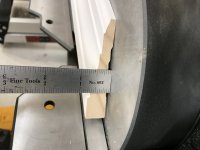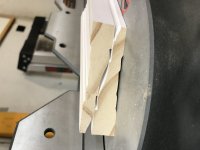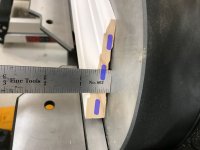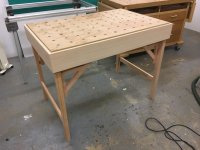HandyDen
Member
- Joined
- Sep 26, 2017
- Messages
- 53
Hello all,
I’m definitely going to get a Domino 500 for joinery at some point, but my immediate need is to join miters on relatively thin colonial casing (see picture). I’m wondering if anyone has used their Domino 500 to join such a small joint? If so, then thats my next purchase; if not, then I’ll probably end up buying a biscuit joiner. I’d obviously rather just own the Domino...thoughts?
I’m definitely going to get a Domino 500 for joinery at some point, but my immediate need is to join miters on relatively thin colonial casing (see picture). I’m wondering if anyone has used their Domino 500 to join such a small joint? If so, then thats my next purchase; if not, then I’ll probably end up buying a biscuit joiner. I’d obviously rather just own the Domino...thoughts?







